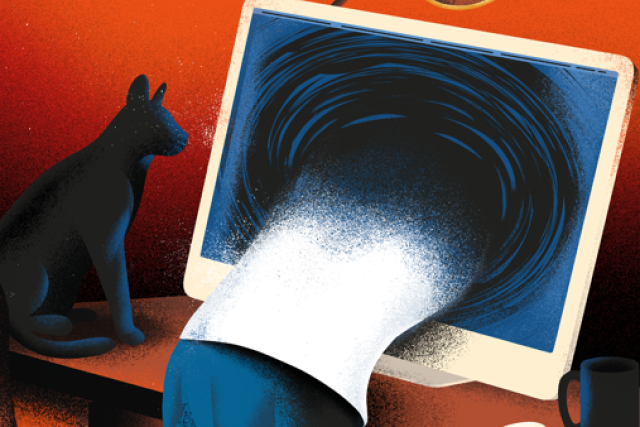I remember the first patient I ever saw as a resident training in women’s health. She was a poised, middle-aged woman of genuine warmth, but she had significant anxiety related to her symptoms. I felt such a sense of accomplishment being able to explain her diagnosis to her in understandable language and lay out a thorough treatment plan. Armed with science-based, factual information and a clear idea of how we would move forward, she became calmer.
Like my first patient, the thousands who have followed often are anxious about their health. Health anxiety, I have come to realize, is embedded in almost all patient encounters, and to allay the concerns of patients, I must be as much an educator and counselor as a doctor.
Then came the explosion of health information available online. When I got my first smart phone, there were a handful of apps and websites that provided some health-related information. But it didn’t take long for the number of apps and sites to grow exponentially.
I have always considered technology to be a strong ally. Good web-based information tools have helped to shorten the time necessary for counseling and have been a means to decrease health-related anxiety by providing patients with easily accessible information.
However, I came to see another side.
One day, in a busy clinic, it struck me that many of the patients with whom I spoke were using phrases similar to “going down the internet rabbit hole.” There is good information out there in the online universe — apps and websites that offer a combination of expertise, evidence-based information, reputational credibility, transparency and trustworthiness — but there’s also a lot that is confusing and inaccurate, and often it is difficult for a lay person to distinguish one from the other. I started paying closer attention, and I soon realized that many of my patient interactions were taking longer than usual because I had to “rescue” them from those rabbit holes they’d tumbled down. Now, in addition to providing sound, fact-based information, I also had to understand the misinformation my patients had absorbed and talk to them about why it wasn’t true.
Not only were patients receiving inaccurate information online, but the information they were getting was escalating the health anxiety of some to new heights.
I started to look into the role of this internet-generated health anxiety and found a number of studies of the phenomenon and the coining of a new term: “cyberchondria.” According to the entry in dictionary.com, cyberchondria is “unfounded anxiety concerning the state of one’s health brought on by visiting health and medical websites.” In an article in Psychiatry Research, it is further defined as “a clinical phenomenon in which repeated internet searches regarding medical information result in excessive concerns about physical health. Cyberchondria is positively associated with symptoms of health anxiety.”
As an obstetrician, I see cyberchondria with some regularity in my first-time moms. So many of the websites, apps and Instagram accounts they follow give them such conflicting and scary information that the joy of being a first-time mom is rapidly replaced by fear of all sorts of rare complications. For those who are prone to anxiety and depression, cyberchondria can amplify every sensation of pregnancy. A simple hiccup of the baby can lead to online searches and end up in an obstetrical emergency unit with a panic attack.
I also see its effects in women who are not pregnant. Misinformation online is, for example, a source of irrational fear about hormonal birth control methods. The female menstrual cycle and the interplay of reproductive hormones is a complex physiological phenomenon, and it takes a detailed curriculum and knowledge of basic science to understand the prescription and management of hormones. Unintended pregnancy due to misinformation and cyberchondria can have lifelong consequences.
Which brings us to the question, why does cyberchondria have such an impact on the behavior of patients? Most theories about health behavior focus on three main aspects. Health behavior is primarily mediated by cognition (how one thinks about a health condition), knowledge (what one understands about a health condition) and perception (how one views the risks associated with a health condition).
Health anxiety usually is related to disproportionate fear of perceived susceptibility to and perceived severity of an illness. While reliable, evidence-based, curated health information on the internet can certainly help by reducing a patient’s health anxiety, individualized opinions and misinformation can worsen the whole process of healing.
At a time when, according to a recent survey, 33% of Gen Z turned to TikTok before their doctors for information about health, one must question where this is going to take us. As I educate medical students to become the next generation of physicians, I worry that our future doctors will face an increasingly difficult task to counteract cyberchondria and will burn out from the frustration and encroachment on their time that it engenders. In my own practice, I try to discourage patients from going down the rabbit hole to investigate advertisements, non-expert personal opinions or promotions of a particular product, test or treatment. These post are typically about increasing followers, and, unfortunately, patients too often fall for it.
Evidence-based science is where patients ought to be putting their faith, not click-bait on the internet. Cyberchondria is very real. As professional health care providers, we must understand its implications, both for our patients and our practices, and be prepared to address cyberchondria as a part of our educational toolkit for the future.
Dr. Aparna Sridhar is associate clinical professor of obstetrics and gynecology in the David Geffen School of Medicine at UCLA.

